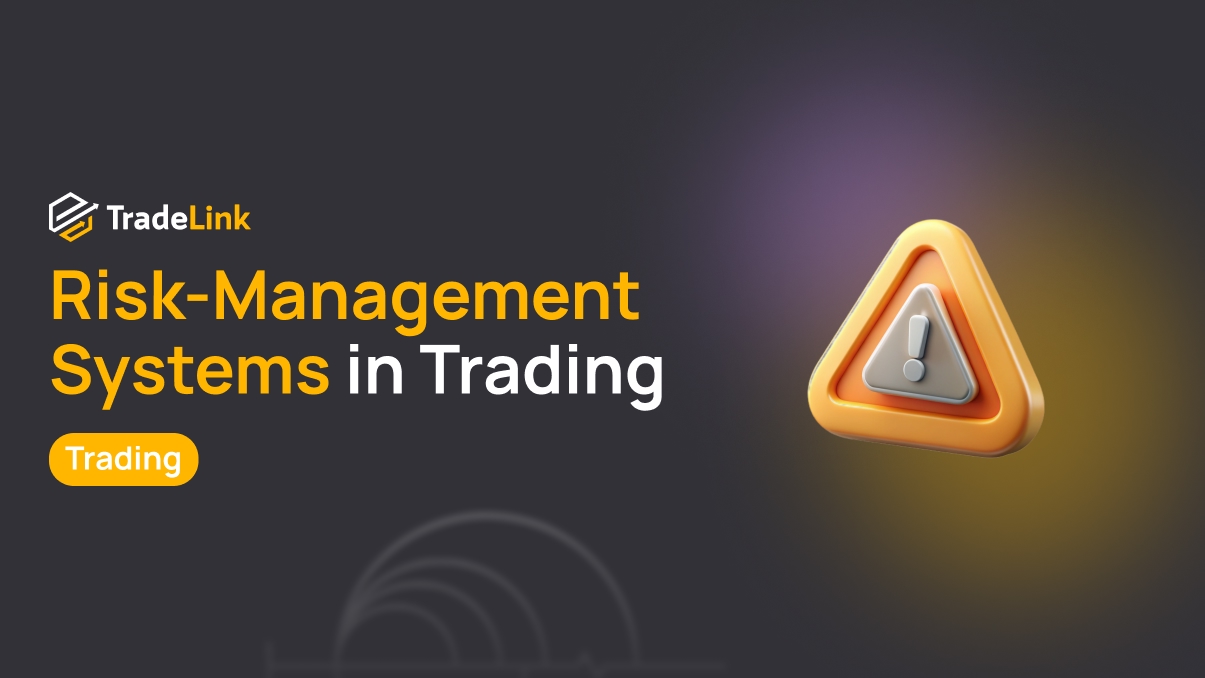Risk Management Systems Traders Actually Use Beyond Stop-Loss Orders

Contents
- Introduction
- Practical Risk Management Systems
- Psychology and Discipline in Risk Management
- Conclusion
Introduction
Risk in the market always goes hand in hand with profit. In volatile cryptocurrencies and traditional assets, the price can change sharply within seconds. At such moments, a stop-loss alone may not be enough: slippage, gaps, spread widening, or technical failures can minimise its effectiveness. Therefore, risk management in trading requires a comprehensive approach. A system helps preserve capital and maintain a stable pace of work.
Risk Management in Trading: The Basics

Risk management is a set of rules that protects the account and makes results more predictable. The key principles include:
-
Fixed risk per trade (e.g., up to 1% of the account)
-
Calculating position size based on a formula, not “by eye”
-
Daily and weekly limits, after which trading is suspended
-
Exit plan: partial profit-taking, moving the stop according to established rules
-
Diversification: distributing risk across different instruments
-
A cash reserve as protection against increased volatility
-
Careful use of leverage and margin in the crypto market
Why a Stop-Loss Is Not Always Enough
A stop-loss plays an important role but has its limitations:
-
Gaps and slippage, when the execution price is worse than expected
-
Spread widening, especially during news releases
-
Insufficient liquidity in the order book
-
“Stop hunting,” when the market briefly breaks a level and then returns to the original direction
-
Technical failures on the broker’s or exchange’s side
-
Cascade liquidations in derivatives are amplifying the move against the majority
An effective system goes beyond a single stop order: it includes sensible position sizing, limits on a series of losses, partial exits, hedging trades, and leverage control. Such an approach significantly increases the chances of preserving capital.
Practical Risk Management Systems

The main goal of any system is to preserve capital and ensure consistent results. In practice, the following methods are often used:
-
Risk limits per trade and per day (e.g., up to 1% per trade and up to 3% per day)
-
Portfolio diversification across asset classes and individual ideas
-
Trade selection based on risk/reward ratio with a clear exit logic
-
Hedging through derivatives — futures and options that help reduce directional risk
-
Margin and leverage control, including a pre-set leverage cap and maintaining a margin buffer
Portfolio Diversification
Distributing capital reduces dependence on a single instrument or event. The main principles are:
-
Limit per idea: one idea does not receive more than 10–20% of the capital
-
Limit per asset class: stocks, cryptocurrencies, stablecoins, cash — each block has its share
-
Considering correlation: similar assets should not accumulate in the same direction
-
Regular rebalancing of shares, e.g., once a month
Diversification does not eliminate risk, but it helps reduce the depth of drawdowns and maintain portfolio balance.
Position Size and Capital Management
Money management sets clear boundaries for each trade. The workflow:
-
Set the risk per trade (e.g., 1% of the account).
-
Determine the stop amount in dollars.
-
Calculate the position size: position size = risk in $ / stop in $.
-
Check the daily limit: total daily risk must not exceed the established value.
Example: account $10,000, risk per trade 1% = $100. With a $2 stop per share, the position size will be 100 / 2 = 50 shares.
This discipline keeps trading within acceptable risk limits and supports consistent results.
Risk/Reward Ratio
R:R shows how much potential profit justifies the risk. The higher the R:R, the fewer winning trades are needed to at least break even.
Variant | Risk (R) | Potential (R) | R:R | Minimum Winning Trade Ratio |
Conservative | 1 | 1 | 1:1 | 50% |
Basic | 1 | 1.5 | 1:1.5 | 40% |
Preferred | 1 | 2 | 1:2 | 33.3% |
Trend-Following | 1 | 3 | 1:3 | 25% |
Choosing trades with a clear R:R is the foundation of effective risk management in trading, including in the crypto market.
Hedging and the Use of Derivatives
When the market direction is uncertain, it is recommended to protect a position as well. In practice, the following techniques are applied:
-
Long spot + short futures: reduces the impact of a decline in the underlying asset’s price
-
Buying a put: a put option insures against a sharp drop and limits losses
-
Covered call: selling a call against a long position generates premium flow and partially smooths the drawdown
-
Pair trades: a long position in a strong asset and a short in a weaker one from the same group
Hedging requires careful monitoring: the cost of insurance, margin requirements, and liquidation risk must all be taken into account.
Margin and Leverage Control
Leverage accelerates both profits and drawdowns, which is why the following rules are usually applied in practice:
-
Leverage limitation: a maximum value is set for each instrument
-
Margin buffer: the level is maintained 20–30% or more above the liquidation threshold
-
Isolated margin for volatile assets: a drawdown in one position does not affect the entire account
-
Accounting for fees and funding rates: the cost of the position is included in the final result, especially in derivatives
-
Pause after a series of losses: leverage is reduced or temporarily not used until the trading plan is restored
Such an approach reduces the probability of liquidation in volatile markets and helps preserve capital.
Psychology and Discipline in Risk Management

Effective risk management is impossible without psychological resilience. Even the most well-thought-out strategies lose value if a trader does not follow their own rules. Discipline helps close trades according to plan, avoid moving stop-losses without reason, and resist increasing position size under the influence of emotions.
A trading journal remains a valuable tool. It records trade parameters, emotions, and results. This tracking helps identify situations when discipline is violated and understand how emotions affect outcomes. Over time, the habit of working systematically is formed, which strengthens a trader’s psychology and supports stability. This is further reinforced by the use of professional trade analytics, which enables the tracking of key trade metrics in real-time, the identification of hidden weaknesses, and the discovery of growth points. Such an approach makes trading more conscious and helps accelerate skill development.
Professional Practice
Experienced traders employ various risk control methods to mitigate the impact of unpredictable events. Among the most common techniques are:
-
Portfolio diversification: capital is distributed among stocks, bonds, cryptocurrencies, and cash, thereby reducing dependence on a single asset class
-
Strict loss limits: a maximum drawdown is set for a day or week, after which trading is suspended
-
Hedging through derivatives: futures and options help ensure the portfolio is protected against sharp market moves
-
Leverage control: moderate leverage is applied with a mandatory margin buffer to avoid liquidation
These methods are utilised in both the cryptocurrency market and traditional financial markets.
Conclusion
Effective risk management comprises a set of tools and guidelines. Stop-losses, diversification, position sizing, hedging strategies, and strict discipline play a key role. Together, they form a system that protects capital and enhances a trader’s performance, making it more consistent across both cryptocurrency markets and traditional financial instruments.